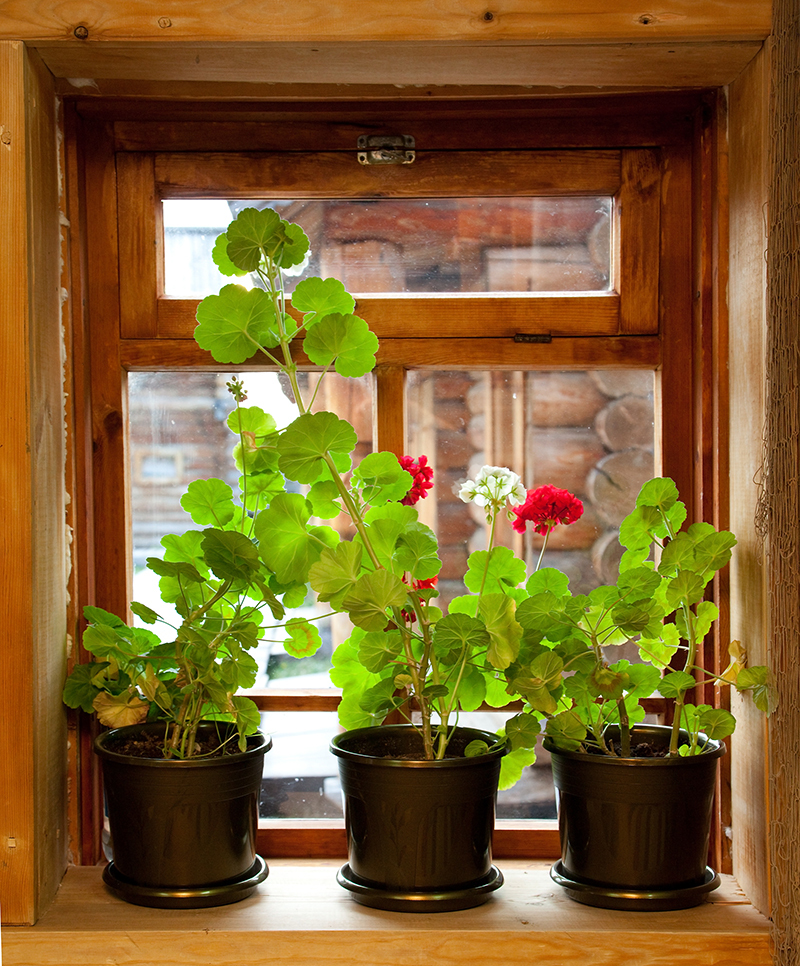Poinsettia Care Tips for Prolonged Beauty
Posted on 22/08/2025
Poinsettia Care Tips for Prolonged Beauty
Poinsettias are among the most cherished plants during the holiday season, renowned for their vibrant red bracts and lush green foliage. To ensure your poinsettia remains a radiant centerpiece long after the festivities have ended, it's essential to understand the fundamentals of prolonged poinsettia care. This comprehensive guide will acquaint you with crucial poinsettia maintenance techniques, helping keep your plant healthy, attractive, and thriving.
Why Poinsettias Require Special Attention
Poinsettias, botanically known as Euphorbia pulcherrima, are native to Mexico and Central America. While many treat them as disposable holiday plants, with proper poinsettia care, these plants can provide beauty well beyond December. Understanding their origins and unique requirements can help you deliver the best environment for lasting poinsettia beauty.
- Delicate root systems are susceptible to overwatering and poor drainage.
- Light preferences change as the seasons progress.
- Temperature sensitivity can impact leaf retention and lasting coloration.

Choosing the Right Poinsettia: The First Step
Before delving into poinsettia plant care, start with a healthy specimen. When selecting your plant:
- Look for lush green leaves without yellowing or browning edges.
- Check bracts (colored leaves) for vibrancy and absence of spots.
- Inspect the central flower buds (cyathia); tightly closed buds signify freshness.
- Examine the stem base for stability and absence of mold.
Best Practices for Poinsettia Placement
Optimal location and light are critical to prolonging poinsettia beauty:
- Bright, indirect light is ideal. Place near a window with filtered sun.
- Direct sunlight may scorch leaves, while too little light fades color.
- Avoid areas close to cold drafts or heat sources (heaters, radiators).
- Maintain stable temperatures between 65-75?F (18-24?C).
Tip:
If you must transport your poinsettia during winter, shield it from the cold with wrapping or a plant sleeve. Sudden drops in temperature can result in leaf drop.
Watering: The Balancing Act
One of the cardinal rules for healthy poinsettia care is correct watering. Overwatering and underwatering are common causes of poinsettia demise.
How to Water Poinsettias
- Water when the soil surface feels dry, but before it becomes bone dry.
- Use room temperature water to avoid shocking roots.
- Allow excess water to drain fully--never let the pot sit in water.
- Empty decorative sleeves or trays after each watering to prevent root rot.
Common Watering Mistakes
- Frequent shallow watering: Encourages weak root systems.
- Leaving water in saucers: Promotes fungal growth and root decay.
- Irregular watering: Causes stress, leading to leaf yellowing or drop.
Humidity and Air Quality
Poinsettias thrive in moderate humidity. During winter, indoor air tends to be dry, especially with central heating. To maintain poinsettia health:
- Mist the plant lightly with water or use a humidity tray.
- Group plants together to create a microclimate of higher humidity.
- Avoid placing near vents or fans to prevent drying out leaves and soil.
Fertilizing for Prolonged Poinsettia Beauty
After the holidays, fertilization becomes important for ongoing leaf and bract health. Here are some fertilizing pointers:
- Delay fertilizing until late winter (about 4-6 weeks after purchase).
- Use a balanced, water-soluble fertilizer (such as 10-10-10) monthly during growth phases.
- Avoid feeding while the plant is still in full bloom.
- Reduce or stop fertilization if the plant is going into dormancy or losing leaves.
How to Keep Poinsettias Colorful Year-Round
To maintain vibrant colors and even encourage re-blooming for the next season, it's important to follow a structured light schedule as autumn approaches.
The Key: Day Length Control (Photoperiod)
- Starting in late September, provide 14-16 hours of complete darkness nightly for 8-10 weeks.
- During the day, expose the plant to bright, indirect light.
- Use a box or blackout cloth to ensure absolute darkness overnight.
- Interrupting the dark period can prevent bract coloration.
Encouraging Re-blooming
After completing the dark/light regimen, you should notice the bracts starting to turn red, pink, white, or other hybrid colors. Regular care resumes thereafter. This process will reward you with another season of vibrant poinsettia displays.
Pruning and Repotting Your Poinsettia
Pruning for Vigorous Growth
After the flowering period, your poinsettia plant may become leggy. Here's how to prune:
- After bracts and leaves have faded, trim stems back to about 4-6 inches above the soil.
- Pinch back new growth during spring and summer to encourage bushiness.
- Always use clean, sharp tools to prevent disease transmission.
Repotting for Healthy Roots
- Repot in spring after pruning if roots outgrow the container or drain poorly.
- Pick a container with ample drainage holes.
- Use a well-draining soil mix, such as one formulated for houseplants.
Dealing with Pests and Diseases
Even with proper poinsettia care, pests and diseases may appear. Here's how to manage them:
- Whiteflies: Look for sticky residue or tiny winged insects. Rinse leaves or use insecticidal soap.
- Spider mites and aphids: Misting and soap sprays deter these sap-suckers.
- Root rot: Avoid overwatering and empty excess water from trays.
- Powdery mildew: Improve air circulation and avoid wetting leaves during watering.
Early detection is the best form of pest and disease control!
Poinsettia Care Calendar: Month-by-Month Guide
To prolong the beauty of your poinsettia throughout the year, follow this seasonal care guide:
- December-January: Display in bright, indirect light. Water as needed. Do not fertilize.
- February-March: As bracts fade, prune back. Reduce watering as growth slows.
- April-May: Repot if necessary. Resume moderate watering and fertilize monthly.
- June-September: Provide abundant light, pinch back new growth for fullness.
- October-November: Begin day/night light and dark regimen for color development.
Pro Tips for Maintaining Poinsettia Health and Appearance
- Rotate your plant regularly to keep growth even and prevent leaning.
- Keep away from curious pets: Poinsettias have a mild toxicity to cats and dogs, causing mild digestive upset if ingested.
- Clean leaves gently to remove dust and allow optimal photosynthesis.
- Be patient: It's normal for some leaves to yellow and fall, especially after transportation or blooming.
- Move outdoors in late spring (if climate permits) to a shaded spot for vigorous growth, returning indoors before first frost.

Frequently Asked Questions about Poinsettia Plant Care
How long do poinsettias typically last?
With proper attention, poinsettias can thrive for many months, and some dedicated owners keep their plant healthy for several years.
Can I plant my poinsettia outside?
In regions free from frost, poinsettias grow as perennial shrubs outdoors. In colder climates, treat them as houseplants or bring them inside during winter.
Why are my poinsettia leaves turning yellow or falling?
Common causes include overwatering, underwatering, sudden temperature changes, or drafts. Adjust your care routine for best results.
Are poinsettias toxic to humans or pets?
Poinsettias have a low toxicity level. Ingestion may cause mild discomfort in pets and humans but is rarely serious. Still, it's wise to keep out of the reach of curious children and animals.
Conclusion: Prolong the Joy of Poinsettias
Taking the time to understand poinsettia care tips for prolonged beauty ensures your holiday plant can illuminate your home well beyond the festive season. With thoughtful attention to light, water, temperature, and seasonal routines, you'll enjoy a display of color that delights for months. Incorporate these comprehensive poinsettia care techniques into your gardening repertoire, and let your poinsettia blossom brighter, longer, and stronger than ever before!
Ready to embark on a year-round poinsettia journey? Follow these tips and watch your poinsettia flourish!
Latest Posts
Poinsettia Care Tips for Prolonged Beauty
Discover which blossom aligns with your unique personality
Top Floral Choices for Birthday Celebrations







